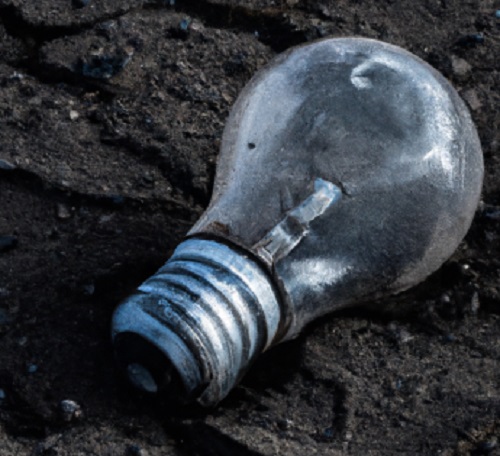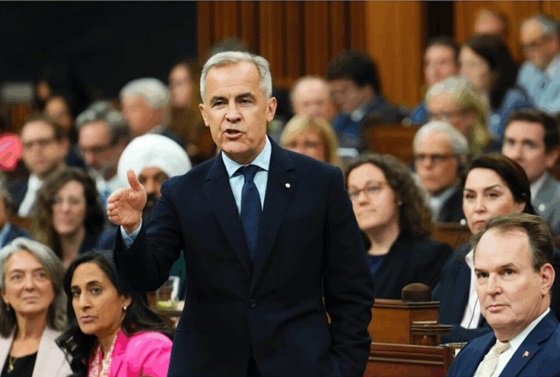Energy
Achtung: Learning from Germany’s energy shambles: Terry Etam

From the Frontier Center for Public Policy
By Terry Etam
No one interviews mechanics about the challenge of an energy transition. In fact, the voices of the many that maintain the system get accused of disinformation for pointing out mechanical realities like “That isn’t gonna work.”
In 1880, a great author, Mark Twain, whom you may never hear spoken of again because he had the audacity to write in the vernacular of the day, wrote an extremely funny essay called The Awful German Language. “Surely there is not another language that is so slipshod and systemless, and so slippery and elusive to the grasp…There are ten parts of speech, and they are all troublesome…Now let the candidate for the asylum try to memorize those variations, and see how soon he will be elected…In German, a young lady has no sex, while a turnip has…a tree is male, its buds are female, its leaves are neuter; horses are sexless, dogs are male, cats are female-tomcats included, of course; a person’s mouth, neck, bosom, elbows, fingers, nails, feet, and body are of the male sex, and his head is male or neuter according to the word selected to signify it…My philological studies have satisfied me that a gifted person ought to learn English (barring spelling and pronouncing) in thirty hours, French in thirty days, and German in thirty years.”
I have no idea if his synopsis is sound, but I do know it is funny as hell and it comes leaping to mind upon any contemplation at all of Germany’s current energy mess. I can’t think of a better turn of phrase than to describe it as slipshod and systemless and slippery and elusive to the grasp.
The lunacy began more than a decade ago, but it took a few years before serious consequences started to appear. They are here now, in full force. Primary among them was the decision to shut down all nuclear power in the country with no suitable base load replacement other than… coal, the last imaginable energy source one could imagine Germany purposely pursuing after a decade of their energy transition shouting. In what had to have been a staggeringly embarrassing moment, the German government even went as far as destroying a village to expand a coal mine. In 2023, not 1923.
To be fair, Germany’s energy demise was hastened by the Russian war and subsequent loss of Russian gas (and to be even more fair, I recognize that as a Canadian I have absolutely no moral high ground to ridicule anyone else’s government). As The Economist put it: “By weaponising the natural gas on which Germany’s mighty industrial base relies, the Russian president is weakening the world’s fourth-biggest economy and its third-biggest exporter of goods.”
But that was an accelerant, and not the match. For more than a decade, Germany has been not just turning away from fossil fuels faster than possible, it has fed mightily into the global narrative that fossil fuels were last century’s news. The overarching anti-hydrocarbon stance, that to maintain a cent in any fossil fuel investment was to risk good money on soon-to-be ‘stranded assets’, has been allowed to take over the public discourse as a fact, with no opposition from even the likes of those now in a very bad spot for allowing these concepts to take root as modern energy givens.
The German war on hydrocarbons is all the more peculiar because of the way in which the country has wrapped almost its entire industrial strategy around them. A physicist named Shaun Maguire outlined it well on Twitter, and thank heavens for people with weird fascinations. (@shaunmmaguire: “I’ve been obsessed with the chemicals industry since I was a kid.”)
Mr Maguire wrote an illuminating thread on Germany’s economy and its relationship to both energy and chemicals (an epic quote right off the top: “Germany’s decision to shut down their nuclear facilities was one of the stupidest political decisions in history. Most of their economy is based on turning energy into chemicals.”).
A profile of Ludwigshafen points out some startling facts. First, the place is enormous. BASF, the massive chemical company, has a ten square kilometre facility in the city with its own transit system.
Ludwigshafen consumes about as much natural gas as Switzerland. The output from Ludwigshafen, per BASF’s website, supports: Agriculture, Automotive/Transportation, Chemicals, Construction, Electronics/Electric, Energy & Resources, Furniture & Wood, Home Care and Industrial/Institutional Cleaning Solutions, Nutrition, Packaging & Print, Paints & Coatings, Personal Care/Hygiene, Pharmaceuticals, Plastics & Rubber, Pulp & Paper, and, finally, Textiles, Leather & Footware. The website has pull-down menus for each category that outline a dizzying array of pretty much everything you’ve ever laid your hands on that wasn’t breathing, photosynthesizing, or dug out of the ground.
Those huge natural gas pipelines flowing into Germany are the very lifeblood of German industry, as much or more so than anywhere else. In many places, without natural gas people would simply freeze. In Germany, they would freeze in many square miles of abandoned petrochemical factories. Sure, it would be steampunk-cool way to go, but other than that there would be nothing aesthetic about it.
Last year, I stood slack-jawed in wonder at news that Germany had constructed an LNG import terminal in 5 months flat (an LNG-Importeinrichtung – feminine). How on earth… it takes a year to get a permit for anything in the western world. How could they build her so fast?
Now I know. They had to. The bedrock of Germany’s mighty industrial base depended on it.
There are no grounds for entertaining the thought that Germany is incapable of designing, building, and operating an optimal energy system. It is crazy to think otherwise; Germany is collectively a formidable engineering talent.
Yet it is equally crazy to shut down a bunch of nuclear reactors with no suitable backup base load power (and remember, the nuclear plants were put on the boat to Valhalla before Russian antics).
Some of Germany’s current energy plans are equally as crazy, such as being short of power and simultaneously activating a mass conversion to electrical heat pumps. Whatever you do in an electrical grid, the one thing you don’t want to do is increase demand peaks. An overarching goal should be to reduce them, because the highest possible load, the point of maximum demand, sets the capacity need for the entire system. If on the coldest, highest demand day of the year, a system needs 1,000 units, it needs to be built and maintained to provide 1,000 units, even if the average demand is only half that.
Germany’s heat pump rollout plan is a scheme that will do exactly the wrong thing. It will significantly increase demand at the exact worst time. It is like taking the example above and resetting the peak to 1,200 units, even if the average remains at 500. The entire system now needs to be able to provide 1,200 on demand.
What happens if it doesn’t? Well, what do you think happens if there is a power failure during the coldest snap of the year, when wind and solar output are low, or if reliance on wind/solar is too great and they can’t perform? It will be catastrophic.
So you might be driven to madness trying to unravel this knot, because on the face of it Germans can’t both be engineering-competent and simultaneously run their energy system into the ground.
The answer to this impossible scenario, how such a contradiction can exist in reality, is due to two things: the politicization of the energy system, and the failure of that energy system to explain and defend itself.
Politics, as we know, is where logic goes to die. Popularity means power; and you can gain popularity in general by keeping citizens happy (hard to do, always something to complain about), or by terrifying them. It should not be a surprise that out of that swamp (one rude Trump-derived nomenclature that I can’t disagree with) comes a plethora of committees and committee decisions made by people for whom reality will always be steamrolled by the quest for popularity (there are exceptions that prove this rule, showing up about three times per century somewhere on the globe).
Thus we get governments fighting to eliminate hydrocarbons for political reasons; because they want to be seen as ‘being on the right side’, and because one side has been so much better at it (more on that in a second), being ‘an environmentalist’ is now colloquially equivalent with being anti-hydrocarbon.
Stuck in the middle of the fear mongering are the plumbers, the farmers, the mechanics, the drivers, the people that actually keep the wheels turning, the ones with their feet grounded in reality and not in armchair-industrialism. Included in that camp are the ones that check the valves and drill the wells that keep the world’s fuel flowing. Others can argue about what it will look like in 40 years, but for the hands-on people, the story is all about today.
But those voices get lost in the noise storm. No one interviews mechanics about the challenge of an energy transition. In fact, the voices of the many that maintain the system get accused of disinformation for pointing out mechanical realities like “That isn’t gonna work.” Capable, knowledgeable people that point out the rising risks of an unreliable electrical grid are shouted down as ‘fossil fuel shills’ or agents of misinformation.
Sadly then, we are forced to live with these pile-driving spasms of bad decisions as part of a political process, democracy, that most would never abandon. And hey, it’s not easy for participants either – Imagine the chaos between the ears of German Chancellor Olaf Scholz, coming to Canada seeking more LNG, then sitting at a press conference listening to Justin Trudeau say there is no business case to be made for LNG to Germany, and being unable to speak against such gibberish because Climate, knowing full well he would go to another country to get an assured supply (and he did, Qatar).
One can’t help but summon sympathy for Mr. Twain’s German-themed bewilderment when hearing what has happened thus far in 2024. Germany recently approved $44 billion in new expenditures to build brand new gas-fired power plants (pacifying their supporters by declaring that the plants must be able to burn hydrogen and are ‘expected to’ do so by 2040 – not hard to spot the weasel words, is it). Note that new natural gas power plants can not be blamed on Russia, because this is just more consumption and not a replacement for supply. To rub salt in the Energiewende-wound, Bloomberg via Yahoo chimes in with the headline, “Germany’s Budget Chaos Leaves Green-Energy Projects in Limbo.” Seems that they found $44 billion for natural gas easily enough though. What was that transition stuff about, again?
Such mystifying behviour is at least partially explained by the second reason that energy system contradictions can exist – the dumbfounding size of the energy education deficit, and for that the hydrocarbon industry can at least partly look in the mirror, because the energy system has not done enough to explain and defend itself.
Consider Alex Epstein for example, a one-man energy-education army that has amassed a huge following. He’s written great books, and even appeared before congress, largely because he has taken the time and effort to point out the colossal benefits that hydrocarbons have brought humanity. Humanity as we know it wouldn’t exist without the hydrocarbon system, nor would most (or all) of the technological innovations we enjoy. Mr. Epstein spells this out, of his own accord, to far greater effect than the entire industry has in the past 30 years.
Many of those energy points are not hard to make, such as this foundational one that even Big Oil CEOs seem unable to articulate: “If one wishes to ascribe certain negative characteristics to hydrocarbon usage, it is only rational to consider the benefits that are derived from same.” And yet the opponents of hydrocarbons have done such a resoundingly thorough and effective job of amplifying any negativity that that simple statement is heard almost nowhere, except by Alex and a handful of others. Those earning massive pay stubs should be leading the charge, and they just aren’t. Not effectively anyway.
A general recognition of the boundless value of current fuels is coming; the question is, now much pain until that becomes commonly understood. The reality is that hydrocarbon usage continues to grow and set record consumption levels, including coal, and will for a long time. The evidence is pretty stark and clear, even for the likes of the IEA that predicts an imminent demise in hydrocarbon demand over and over and over, then keeps re-upping demand estimates as they happen.
A great number of innovative ideas are making their way to market that will start making inroads on how we deal with energy and industry. But until proven at scale, the existing system needs to be protected from frightened mobs, and someone needs to explain reality to them.
We all know what’s going to happen; an energy transition will happen over the next century at a realistic pace as new technology/nuclear/whatever becomes dominant. The challenge is: How much damage will be done before our elected representatives start choosing optimization, as opposed to whatever it is they’re doing now?
Terry Etam is a columnist with the BOE Report, a leading energy industry newsletter based in Calgary. He is the author of The End of Fossil Fuel Insanity. You can watch his Policy on the Frontier session from May 5, 2022 here.
Energy
Liberals Twisted Themselves Into Pretzels Over Their Own Pipeline MOU

From Energy Now
By Margareta Dovgal
Playing politics with pipelines is a time-honored Canadian tradition. Recent events in the House of Commons offered a delightful twist on the genre.
The Conservatives introduced a motion quoting the Liberals’ own pipeline promises laid out in the Memorandum of Understanding (MOU) with Alberta, nearly verbatim. The Liberals, true to form, killed it 196–139 with enthusiastic help from the NDP, Bloc, and Greens.
We all knew how this would end. Opposition motions like this never pass; no government, especially not one led by Mark Carney, is going to let the opposition dictate the agenda. There’s not much use feigning outrage that the Liberals voted it down. The more entertaining angle has been watching closely as Liberal MPs twist themselves into pretzels explaining why they had to vote “no” on a motion that cheers on a project they claim to support in principle.
Liberal MP Corey Hogan dismissed the motion as “game-playing” designed to “poke at people”.
And he’s absolutely right to call it a “trap” for the Liberals. But traps only work when you walk into them.
Indigenous Services Minister Mandy Gull-Masty deemed the motion an “immature waste of parliamentary time” and “clearly an insult towards Indigenous Peoples” because it didn’t include every clause of the original agreement. Energy Minister Tim Hodgson decried it as a “cynical ploy to divide us” that “cherry-picked” the MOU.
Yet the prize for the most tortured metaphor goes to the prime minister himself. Defending his vote against his own pipeline promise, Carney lectured the House that “you have to eat the entire meal, not just the appetizer.”
It’s a clever line, and it also reveals the problem. The “meal” Carney is serving is stuffed with conditions. Environmental targets or meaningful engagement with Indigenous communities aren’t unrealistic asks. A crippling industrial carbon price as a precondition might be though.
But the prime minister has already said the quiet part out loud.
Speaking in the House a few weeks ago, Carney admitted that the agreement creates “necessary conditions, but not sufficient conditions,” before explicitly stating: “We believe the government of British Columbia has to agree.”
There is the poison pill. Handing a de facto veto to a provincial government that has spent years fighting oil infrastructure is neither constitutionally required nor politically likely. Elevating B.C.’s “agreement” to a condition, which is something the MOU text itself carefully avoids doing, means that Carney has made his own “meal” effectively inedible.
Hodgson’s repeated emphasis that the Liberal caucus supports “the entire MOU, the entire MOU” only reinforces this theory.
This entire episode forces us to ask whether the MOU is a real plan to build a pipeline, or just a national unity play designed to cool down the separatist temperature in Alberta. My sense is that Ottawa knew they had to throw a bone to Premier Danielle Smith because the threat of the sovereignty movement is gaining real traction. But you can’t just create the pretense of negotiation to buy time.
With the MOU getting Smith boo’ed at her own party’s convention by the separatists, it’s debatable whether that bone was even an effective one to throw.
There is a way. The federal government has the jurisdiction. If they really wanted to, they could just do it, provided the duty to consult with and accommodate Indigenous peoples was satisfied. Keep in mind: no reasonable interpretation equates Section 35 of the Charter to a veto.
Instead, the MOU is baked with so many conditions that the Liberals have effectively laid the groundwork for how they’re going to fail.
With overly-hedged, rather cryptic messaging, Liberals have themselves given considerable weight to a cynical theory, that the MOU is a stalling tactic, not a foundation to get more Canadian oil to the markets it’s needed in. Maybe Hodgson is telling the truth, and caucus is unified because the radicals are satisfied that “the entire MOU” ensures that a new oil pipeline will never reach tidewater through BC.
So, hats off to the legislative affairs strategists in the Conservative caucus. The real test of Carney’s political power continues: can he force a caucus that prefers fantasy economics into a mold of economic literacy to deliver on the vision Canadians signed off on? Or will he be hamstrung trying to appease the radicals from within?
Margareta Dovgal is managing director of Resource Works Society.
Daily Caller
Paris Climate Deal Now Decade-Old Disaster


From the Daily Caller News Foundation
By Steve Milloy
The Paris Climate Accord was adopted 10 years ago this week. It’s been a decade of disaster that President Donald Trump is rightly trying again to end.
The stated purpose of the agreement was for countries to voluntarily cut emissions to avoid the average global temperature exceeding the (guessed at) pre-industrial temperature by 3.6°F (2°C) and preferably 2.7°F (1.5°C).
Since December 2015, the world spent an estimated $10 trillion trying to achieve the Paris goals. What has been accomplished? Instead of reducing global emissions, they have increased about 12 percent. While the increase in emissions is actually a good thing for the environment and humanity, spending $10 trillion in a failed effort to cut emissions just underscores the agreement’s waste, fraud and abuse.
As a nonprofit, we are dependent on the generosity of our readers.
Please consider making a small donation of any amount here.
Thank you!
But wasting $10 trillion is only the tip of the iceberg.
The effort to cut emissions was largely based on forcing industrial countries to replace their tried-and-true fossil fuel-based energy systems with not-ready-for-prime-time wind, solar and battery-based systems. This forced transition has driven up energy costs and made energy systems less reliable. The result of that has been economy-crippling deindustrialization in former powerhouses of Germany and Britain.
And it gets worse.
European nations imagined they could reduce their carbon footprint by outsourcing their coal and natural gas needs to Russia. That outsourcing enriched Russia and made the European economy dependent on Russia for energy. That vulnerability, in turn, and a weak President Joe Biden encouraged Vladimir Putin to invade Ukraine.
The result of that has been more than one million killed and wounded, the mass destruction of Ukraine worth more than $500 billion so far and the inestimable cost of global destabilization. Europe will have to spend hundreds of billions more on defense, and U.S. taxpayers have been forced to spend hundreds of billions on arms for Ukraine. Putin has even raised the specter of using nuclear weapons.
President Barack Obama unconstitutionally tried to impose the Paris agreement on the U.S. as an Executive agreement rather than a treaty ratified by the U.S. Senate. Although Trump terminated the Executive agreement during his first administration, President Joe Biden rejoined the agreement soon after taking office, pledging to double Obama’s emissions cuts pledge to 50 percent below 2005 levels by 2030.
Biden’s emissions pledge was an impetus for the 2022 Inflation Reduction Act that allocated $1.2 trillion in spending for what Trump labeled as the Green New Scam. Although Trump’s One Big Beautiful Bill Act reduced that spending by about $500 billion and he is trying to reduce it further through Executive action, much of that money was used in an effort to buy the 2024 election for Democrats. The rest has been and will be used to wreck our electricity grid with dangerous, national security-compromising wind, solar and battery equipment from Communists China.
Then there’s this. At the Paris climate conference in 2015, U.S. Secretary of State John Kerry stated quite clearly that emissions cuts by the U.S. and other industrial countries were meaningless and would accomplish nothing since the developing world’s emissions would be increasing.
Finally, there is the climate realism aspect to all this. After the Paris agreement was signed and despite the increase in emissions, the average global temperature declined during the years from 2016 to 2022, per NOAA data.
The super El Nino experienced during 2023-2024 caused a temporary temperature spike. La Nina conditions have now returned the average global temperature to below the 2015-2016 level, per NASA satellite data. The overarching point is that any “global warming” that occurred over the past 40 years is actually associated with the natural El Nino-La Nina cycle, not emissions.
The Paris agreement has been all pain and no gain. Moreover, there was never any need for the agreement in the first place. A big thanks to President Trump for pulling us out again.
Steve Milloy is a biostatistician and lawyer. He posts on X at @JunkScience.
-

 armed forces2 days ago
armed forces2 days agoOttawa’s Newly Released Defence Plan Crosses a Dangerous Line
-

 Daily Caller1 day ago
Daily Caller1 day agoParis Climate Deal Now Decade-Old Disaster
-

 Business1 day ago
Business1 day agoOttawa Pretends To Pivot But Keeps Spending Like Trudeau
-

 Energy24 hours ago
Energy24 hours agoLiberals Twisted Themselves Into Pretzels Over Their Own Pipeline MOU
-

 Censorship Industrial Complex21 hours ago
Censorship Industrial Complex21 hours agoHow Wikipedia Got Captured: Leftist Editors & Foreign Influence On Internet’s Biggest Source of Info
-

 Health2 days ago
Health2 days agoCanadian gov’t considers sharing census data on gender-confused children
-

 Indigenous1 day ago
Indigenous1 day agoResidential school burials controversy continues to fuel wave of church arsons, new data suggests
-

 Alberta1 day ago
Alberta1 day agoAlberta’s huge oil sands reserves dwarf U.S. shale









